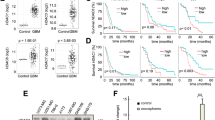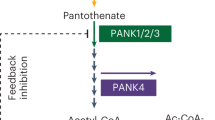Abstract
Conventional chemotherapeutic drugs target proliferating cells, relying on often small differences in drug sensitivity of tumour cells compared to normal tissue to deliver a therapeutic benefit. Consequently, they have significant limiting toxicities and greatly reduced efficacy against nonproliferating compared to rapidly proliferating tumour cells. This lack of selectivity and inability to kill nonproliferating cells that exist in tumours with a low mitotic index are major failings of these drugs. A relatively new class of anticancer drugs, the histone deacetylase inhibitors (HDI), are selectively cytotoxic, killing tumour and immortalized cells but normal tissue appears resistant. Treatment of tumour cells with these drugs causes both G1 phase cell cycle arrest correlated with increase p21 expression, and cell death, but even the G1 arrested cells died although the onset of death was delayed. We have extended these observations using cells that were stably arrested by either serum starvation or expression of the cyclin-dependent kinase inhibitor p16ink4a. We report that histone deacetylase inhibitors have similar cytotoxicity towards both proliferating and arrested tumour and immortalized cells, although the onset of apoptosis is delayed by 24 h in the arrested cells. Both proliferating and arrested normal cells are unaffected by HDI treatment. Thus, the histone deacetylase inhibitors are a class of anticancer drugs that have the desirable features of being tumour-selective cytotoxic drugs that are equally effective in killing proliferating and nonproliferating tumour cells and immortalized cells. These drugs have enormous potential for the treatment of not only rapidly proliferating tumours, but tumours with a low mitotic index.
This is a preview of subscription content, access via your institution
Access options
Subscribe to this journal
Receive 50 print issues and online access
$259.00 per year
only $5.18 per issue
Buy this article
- Purchase on Springer Link
- Instant access to full article PDF
Prices may be subject to local taxes which are calculated during checkout










Similar content being viewed by others
References
Archer SY, Meng S, Shei A and Hodin RA . (1998). Proc. Natl. Acad. Sci. USA, 95, 6791–6796.
Bernhard D, Ausserlechner MJ, Tonko M, Loffler M, Hartmann BL, Csordas A and Kofer R . (1999). FASEB J., 13, 1991–2001.
Burgess AJ, Pavey S, Warrener R, Hunter LJ, Piva TJ, Musgrove EA, Saunders N, Parsons PG and Gabrielli BG . (2001). Mol. Pharmacol., 60, 828–837.
Chittenden T . (2002). Cancer Cell, 2, 165–166.
Drewinko B, Patchen M, Yang LY and Barlogie B . (1981). Cancer Res., 41, 2328–2333.
Fueyo J, Gomez-Manzano C, Puduvalli VK, Martin-Duque P, Perez-Soler R, Levin VA, Yung WK and Kyritsis AP . (1998). Int. J. Oncol., 12, 665–669.
Gabrielli BG, Johnstone RW and Saunders NA . (2002). Curr. Cancer Drug Targets, 2, 337–353.
Henderson C, Mizzau M, Paroni G, Maestro R, Schneider C and Brancolini C . (2003). J. Biol. Chem., 278, 12579–12589.
Ju R and Muller MT . (2003). Cancer Res., 63, 2891–2897.
Kim YB, Lee KH, Sugita K, Yoshida M and Horinouchi S . (1999). Oncogene, 18, 2461–2470.
Marks PA, Richon VM, Breslow R and Rifkind RA . (2001). Curr. Opin. Oncol., 13, 477–483.
Mitsiades N, Mitsiades CS, Richardson PG, McMullan C, Poulaki V, Fanourakis G, Schlossman R, Chauhan D, Munshi NC, Hideshima T, Richon VM, Marks PA and Anderson KC . (2003). Blood, 101, 4055–4062.
Parsons PG, Hansen C, Fairlie DP, West ML, Danoy PA, Sturm RA, Dunn IS, Pedley J and Ablett EM . (1997). Biochem. Pharmacol., 53, 1719–1724.
Peart MJ, Tainton KM, Ruefli AA, Dear AE, Sedelies KA, O'Reilly LA, Waterhouse NJ, Trapani JA and Johnstone RW . (2003). Cancer Res., 63, 4460–4471.
Prabhu NS, Somasundaram K, Tian H, Enders GH, Satyamoorthy K, Herlyn M and El-Deiry WS . (1999). Int. J. Oncol., 15, 209–216.
Qiu L, Burgess A, Fairlie DP, Leonard H, Parsons PG and Gabrielli BG . (2000). Mol. Biol. Cell, 11, 2069–2083.
Qiu L, Kelso MJ, Hansen C, West ML, Fairlie DP and Parsons PG . (1999). Br. J. Cancer, 80, 1252–1258.
Rahmani M, Yu C, Dai Y, Reese E, Ahmed W, Dent P and Grant S . (2003). Cancer Res., 63, 8420–8427.
Richon VM, Sandhoff TW, Rifkind RA and Marks PA . (2000). Proc. Natl. Acad. Sci. USA, 97, 10014–10019.
Rosato RR, Wang Z, Gopalkrishnan RV, Fisher PB and Grant S . (2001). Int. J. Oncol., 19, 181–191.
Ruefli AA, Ausserlechner MJ, Bernhard D, Sutton VR, Tainton KM, Kofler R, Smyth MJ and Johnstone RW . (2001). Proc. Natl. Acad. Sci. USA, 98, 10833–10838.
Sambucetti LC, Fischer DD, Zabludoff S, Kwon PO, Chamberlin H, Trogani N, Xu H and Cohen D . (1999). J. Biol. Chem., 274, 34940–34947.
Schmidt M and Fan Z . (2001). Oncogene, 20, 6164–6171.
Stone S, Dayananth P and Kamb A . (1996). Cancer Res., 56, 3199–3202.
Suzuki A, Hayashida M, Ito T, Kawano H, Nakano T, Miura M, Akahane K and Shiraki K . (2000). Oncogene, 19, 3225–3234.
Suzuki A, Tsutomi Y, Miura M and Akahane K . (1999). Oncogene, 18, 1239–1244.
Taddei A, Maison C, Roche D and Almouzni G . (2001). Nat. Cell Biol., 3, 114–120.
Vrana JA, Decker RH, Johnson CR, Wang Z, Jarvis WD, Richon VM, Ehinger M, Fisher PB and Grant S . (1999). Oncogene, 18, 7016–7025.
Wang XQ, Gabrielli BG, Milligan A, Dickinson JL, Antalis TM and Ellem KA . (1996). Cancer Res., 56, 2510–2514.
Warrener R, Beamish H, Burgess A, Waterhouse NJ, Giles N, Fairlie D and Gabrielli B . (2003). FASEB J., 17, 1550–1552.
Acknowledgements
This work was supported by grants from the NHMRC of Australia to BG, RJ and NS.
Author information
Authors and Affiliations
Corresponding author
Rights and permissions
About this article
Cite this article
Burgess, A., Ruefli, A., Beamish, H. et al. Histone deacetylase inhibitors specifically kill nonproliferating tumour cells. Oncogene 23, 6693–6701 (2004). https://doi.org/10.1038/sj.onc.1207893
Received:
Revised:
Accepted:
Published:
Issue Date:
DOI: https://doi.org/10.1038/sj.onc.1207893
Keywords
This article is cited by
-
Eliminating chronic myeloid leukemia stem cells by IRAK1/4 inhibitors
Nature Communications (2022)
-
Histone Deacetylase Inhibitors Resensitize EGFR/EGFRvIII-Overexpressing, Erlotinib-Resistant Glioblastoma Cells to Tyrosine Kinase Inhibition
Targeted Oncology (2016)
-
Panobinostat reduces hypoxia-induced cisplatin resistance of non-small cell lung carcinoma cells via HIF-1α destabilization
Molecular Cancer (2015)
-
Selective class IIa HDAC inhibitors: myth or reality
Cellular and Molecular Life Sciences (2015)
-
Histone deacetylase inhibitors in hematological malignancies and solid tumors
Archives of Pharmacal Research (2015)



